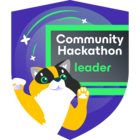I have two things I wanted to share this week here that might useful to the community.
Red Hat Summit
Next week is Red Hat Summit and I will be heading out to Denver, CO for the first time to get my learning on with the Red Hat Community.
Red Hat has been a staple in the enterprise technology space for many years. Whilst I have been interested and using Red Hat Linux for a number of years in various different places, the real interest for me is around their Red Hat Ansible Automation Platform and of course as it pertains to Kubernetes, Red Hat OpenShift
I have looked at the schedule for the event and picked out some very interesting sessions, an interesting session that I found was Terraform and with the recent announcements from IBM (IBM also own Red Hat) this will be very interesting as to how Ansible and Terraform could align in the future.
From a Veeam perspective with Red Hat we have a few things but the most notable is the integration and partnership we have with Red Hat OpenShift.
Veeam Kasten for Kubernetes is available within the OpenShift OperatorHub, which is a marketplace option to deploy within your cluster as well as the helm deployment option. Not only are we protecting the container side of OpenShift but also OpenShift Virtualisation, which is the ability to run Virtual Machines inside of Kubernetes. We also have some interesting specific announcements this week covering our 7.0 release that we might get to in a next post.
All in all looking forward to learning more about OpenShift and getting an update on Ansible.
Virtual machines on Kubernetes
Yes, you heard me right.. protecting virtual machines that are running on OpenShift Virtualisation or OCP-V… We have had this capability for a while and not a sneak peak into the 7.0 although enhancements will land with that new release.
With the virtualisation disruption we have seen people evaluating their options when it comes to where they run their virtual machines, as a backup company we have to listen to the customer and we had to bring the ability to protect these workloads that are landing here.
The technology used for OCP-V is from a project called KubeVirt a snippet from the projects site states
the technology provides a unified development platform where developers can build, modify, and deploy applications residing in both Application Containers as well as Virtual Machines in a common, shared environment.
As we see a lot of data residing outside of the Kubernetes clusters this could involve databases running on VMs this project enables getting that data closer to the complete application and knowing that we can protect it is a plus, although we still protect those workloads if they reside on another virtualisation hypervisor or platform as a service.
You can find more info and a demo on the OCP-V backup capabilities with Kasten below:
OpenShift is more than just Kubernetes
Besides the OCP-V mention above OpenShift is a technology that provides a unified development platform where developers can build, modify, and deploy applications residing in both Application Containers as well as Virtual Machines in a common, shared environment.
OpenShift is not a fork of Kubernetes, it is a distribution of Kubernetes which as mentioned above has some additional features and tools.
Kubernetes as a distribution is never enough, you will have to add networking, ingress, load balancing, storage, monitoring, logging, multi cluster management, continuous integration and continuous delivery (CI/CD), and more to have a fully functional cluster. With OpenShift these are all available natively.
OpenShift can also run anywhere, you have options to run this on premises on top of vSphere, you have the ability to run this in AWS (ROSA), Microsoft Azure (ARO) and loads more places, this ensures that your teams have the same experience across different platforms and services.
Not just for the enterprise
Probably the most underrated way of getting hands-on with Red Hat OpenShift is the Developer Sandbox, it is a free way to explore the platform. You basically get free access to a cluster for 30 days which allows you to bring your own apps to run on top, use those bundled tools previously mentioned and then also walk through some guided learning they have.
Another option is OKD, this option gives you the option to run a version on your location. I have ran through the “Installing a cluster on vSphere” before and it is quite simple. If you would like to see a walkthrough on that let me know, unless
The quickest option get started with OpenShift is with “Red Hat OpenShift Local” seemingly this also seems to have a new name or at least it is transitioning to or from “Red Hat CodeReady Containers”. To get things up and running you download the code release for your OS and run through the instructions to have something available to you. I have never used this option but if intrigued maybe we can put a post up about this, I would assume this probably gives a look and feel but is lacking the useable features maybe in some way… maybe I am wrong… this does happen.
Reporting back
I will try and learn something and come back and share that learning with this community. If you are over in Denver for the event and happen to stumble across this come and say hi… also any questions or experiences with Red Hat OpenShift that you have had, would love to hear them.






